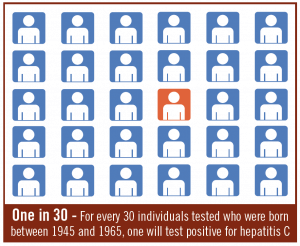by Specialdocs Consultants, LLC | Nov 20, 2017 | Healthy Aging, Patient News

While exercise has an undisputed key role in maintaining brain health throughout our lives, promising new research points to a number of other factors that can spell the difference between thriving or just surviving the senior years. We checked in with Eric Terman, MD, personal physician and Assistant Professor of Internal Medicine and Geriatrics at Northwestern University for an informed view of the latest thinking on this topic…important not just for current seniors, but also for aging Baby Boomers and for younger 40-somethings just beginning the “aging” process.
What are some of the key findings of current studies into how the mind ages?
Research shows that the brain continues to form new connections throughout life. This process, called adult neurogenesis, shows how plastic or structurally adaptable the brain is, even as we age. A combination of exercise, diet and stimulating environments can increase adult neurogenesis and improve cognitive functioning in young and old individuals. This has been documented in animals and we are seeing increasing evidence this occurs with humans too.
What role does exercise play?
We know exercise appears to increase the neurogenerative properties. While the cause is not clearly proven yet, there is little doubt that exercise benefits both body and mind in many ways. It is associated with reduced risk of dementia, and may actually be preventive. For these reasons, I almost always recommend a form of regular activity to my patients.
Do you advise your older patients to consider retirement for reduced stress, more time for leisure activities, etc?
It’s critical to stay engaged in something you care about, whether or not you’re earning a significant salary. The brain stays sharp if you continually grapple with problems, find solutions and achieve positive outcomes.
Wouldn’t lifelong learning classes and lectures fill that void?
Sometimes listening to a lecturer can be barely better than watching TV in terms of passive versus active involvement of your brain. Unless you’re reading textbooks and writing papers, you’re better off with the type of engagement you receive from working. It’s the same reason the benefits of brain training games are unclear – problem solving for real world issues results in better cognitive capacity.
Can you explain mindfulness-based interventions and how these work to reduce the severity or risk of diseases such as Parkinson’s and Alzheimer’s?
High levels of stress are associated with increased risk of these diseases, and with mild cognitive impairment. Mindfulness-based interventions such as meditation and yoga are non-invasive stress reducers, and proven effective complements to treatments for anxiety, hypertension, chronic pain and insomnia too. Preliminary research is also showing that mindfulness-based interventions reduce atrophy of the hippocampus (a critical site of episodic memory), increase gray matter and improve functional connectivity in the neural networks of the brain most affected by the disease process of Parkinson’s and Alzheimer’s.
What is the best way to get started with this kind of program?
There are formal meditation programs and yoga training activities, as well as some excellent apps that take you through the process, such as Headspace.
What advice would you give seniors looking for ways to keep their brain and spirit vigorous as they age?
Find something to pursue that keeps you actively engaged and that you love to do if you formally stop working. Definitely, keep moving – I have patients who have started exercise programs in their 70s and they see significant differences in the way they feel. Modify your sleep behaviors if needed to ensure a good refreshing sleep, every night. And while the effect of a strong social network may be somewhat of a chicken-egg conundrum, there is increasing evidence that social and mental stimulation strengthen connections between nerve cells in the brain.
Breakthrough research sheds new light on Alzheimer’s disease
Numerous studies of Alzheimer’s disease, the leading cause of dementia that gradually erodes a person’s memory, thinking and ability to perform everyday tasks, are beginning to provide answers as to causes and possible targets for treatment. For instance, the link with cardiovascular disease has become increasingly evident. Several conditions known to raise the risk of cardiovascular disease, including high blood pressure, diabetes and high cholesterol, also increase the risk of developing Alzheimer’s – as many as 80 percent of individuals with Alzheimer’s disease also have cardiovascular disease, according to the Alzheimer’s Association. Experts have noted that while some people develop brain plaques and tangles seen in the disease, they do not suffer from the symptoms of Alzheimer’s unless vascular disease is also present.
Other new research is focused on the blood-brain barrier (BBB), a protective filter of the brain that becomes more damaged in patients with Alzheimer’s disease. At University of Southern California, neuroscientist Berislav Zlokovic and team found that the BBB becomes leaky with age, starting in the hippocampus, an area that is affected before the symptoms of Alzheimer’s disease are seen. He noted that specialized brain scans might help doctors diagnose the condition earlier. “Dr. Zlokovic’s advances bring us that much closer to a cure,” reports the chairman of the Cure Alzheimer’s Fund.
The post The Healthy Aging Brain…a Continuing Series appeared first on Specialdocs Consultants.
by Specialdocs Consultants, LLC | Nov 20, 2017 | Nutrition, Patient News

Let food be thy medicine and medicine be thy food. – Hippocrates
Food’s healing properties is a concept that stems back to the earliest days of medicine, but has taken on new significance as a natural way to prevent or manage today’s most devastating illnesses, from dementia to heart disease. The regimens presented below are not ‘diets’ in the traditional sense, but rather represent a shift to eating habits that preserve wellness.
DASH (Dietary Approaches to Stop Hypertension), a low-sodium diet that encourages consumption of foods rich in nutrients such as potassium and calcium magnesium that help lower blood pressure, prevent diabetes and support heart health.
The Mediterranean diet emphasizes fish, fruits, and vegetables, with olive oil as the main source of fat, has gained prominence for its link to stronger bones, a healthier heart and reduced blood pressure.
Combining both of the above, the MIND (Mediterranean-DASH Intervention for Neurodegenerative Delay) diet, from Rush University Medical Center, shows real promise in helping patients maintain cognition and reduce the risk of dementia. Seniors who rigorously adhered to the recommended foods lowered their risk for Alzheimer’s disease by 53 percent, but even those who followed it only moderately well experienced a 35 percent reduction, according to newly published research from the Health and Retirement Study. The focus is on eating ‘brain-healthy’ foods, including:
Green leafy vegetables, such as spinach or kale – at least six servings weekly
- Other vegetables – at least one serving daily
- Nuts
- Berries – at least twice weekly
- Beans – at least three servings weekly
- Whole grains – three servings daily
- Fish – at least once weekly
- Poultry – at least twice weekly
- Olive oil
- Wine – once daily, if desired
Excluded: red meat, butter, margarine, cheese, pastries, sweets, refined sugar or flour, and fried or fast food. Eggs and dairy are included but in small portions.
Additional research points to the role of a high quality diet in preserving brain health and maintaining cognition. However, MIND study lead author and nutritional epidemiologist Claire McEvoy, Phd, cautions that to conclusively prove the connection between diet and dementia risk, the next step is to conduct clinical trials. In the meantime, experts say there’s no harm in incorporating these foods into your daily diet, as they provide antioxidants, assist with maintenance of normal blood pressure levels and help keep chronic inflammation in check.
Other plans worth considering:
Weight Watchers: still a smart, effective diet after 54 years. It’s rated high by dietitians for ease of adherence, nutritional soundness, emphasis on group support, abundance of fruits and vegetables, and allowance for occasional indulgences.
Mayo Clinic Diet: consisting of a two-week jump start for weight loss, followed by a lifelong approach to diet and health, with information on food choices, portion sizes, menu planning and physical activity. The emphasis is on generous amounts of low-energy-dense foods that help you lose weight by feeling full on fewer calories, and includes whole-grain carbohydrates, lean sources of protein and unsaturated fats. At least 30 minutes of exercise is recommended daily. A typical 1200-calorie-a-day menu includes:
- Breakfast: 1/2 cup cooked oatmeal with 1 cup milk and 2 tablespoons raisins, 1/4 cup mango, calorie-free beverage
- Lunch: Quinoa and sweet potato cakes, tossed salad with fat-free dressing, calorie-free beverage
- Dinner: 1 pita pizza, 3/4 cup mixed fruit, calorie-free beverage
- Snack: 1 cup sliced bell peppers and 2 tablespoons hummus
The post MIND Your Diet appeared first on Specialdocs Consultants.
by Specialdocs Consultants, LLC | Nov 20, 2017 | Medical Tests, Medications, Patient News

This is the first in a series exploring some of the most promising advances inspired by the Human Genome project. From the burgeoning field of pharmacogenomics to consumer genetic testing such as 23 and Me, the time from discovery to application is progressing rapidly. We’ll look at some of the latest thinking and its impact on personalizing medicine in the future.
To boil down a complex subject to its very human goal, pharmacogenomics means using genomics to get the right dose of the right drug to the right patient at the right time. There is tremendous variability in individual response to drugs, and a large percentage of adverse drug reactions may be due to genetic variables that are just beginning to be really understood.
It’s important to note that while significant progress has been made, the actual use of pharmacogenomics in primary care may be many years away and unlikely to impact the way in which your physician currently prescribes medications for you. However, as research continues to accumulate, the medical community is hopeful that this information will someday help guide prescription decision-making in a much more precise and personalized way.
Did You Know?
1957 – Dr. Arno Motulsky suggests that individual differences in drug efficacy and adverse drug reactions are at least partially attributable to genetic variations
2008 – The Food and Drug Administration releases a table listing genomic biomarkers with established roles in determining drug response
Sources: The National Human Genome Research Project, UptoDate, FDA.gov, JAMA
What we know now
Slightly different, but normal, variations in the human genetic code can yield proteins that work better or worse when they are metabolizing different types of drugs and other substances. Even small differences can have a major effect on a drug’s safety or effectiveness for an individual patient. Your drug-metabolizing enzymes may be set to act in a completely different way than a friend of similar height and weight because phenotypes range from ultrarapid and rapid metabolizers to normal, intermediate and poor metabolizers.
Consider this example from the National Institutes of Health: The liver enzyme known as CYP2D6 acts on 25 percent of all prescription drugs, including the pain reliever codeine. There are more than 160 versions of the CYP2D6 gene, and many of these vary by only a single difference in their DNA sequence. People who manufacture an overabundance of CYP2D6 enzyme molecules metabolize the drug very rapidly, and as a result, even a standard dose can be too much. Conversely, those who carry a CYP2D6 gene that results in a slowly metabolizing enzyme may not experience any pain relief. Armed with this kind of information, a physician may be able to prescribe different types of pain relievers for both of these patients.
The Food and Drug Administration now includes pharmacogenomic information on the labels of some medications, with details on risk for adverse events and side effects, effectiveness for people with specific genome variations, genotype-specific dosing and mechanisms of drug action (the specific biochemical interaction through which a drug substance produces its pharmacological effect). This may eventually help physicians make the right individual patient choices for drugs that include pain relievers, antidepressants, antivirals, statins and blood thinners.
A number of barriers, which includes the lack of clear, evidence-based guidelines, need to be overcome before personalized drug therapy becomes a routine component of mainstream medicine. For now, pharmacogenetics testing is successfully being used in treatment of specific genetically influenced tumors, and for certain medications for cystic fibrosis, inflammatory bowel disease and HIV…important first steps in this promising field.
Defining Terms
- Pharmacogenomics: A field of research focused on understanding how genes affect individual responses to medications.
- Pharmacogenetics: Sometimes used interchangeably with pharmacogenomics, it’s actually a subcategory that refers to the role of genetic variation on response to a drug; can be inherited through the germline or acquired as in a tumor.
- Pharmacokinetics: How a drug moves through an individual’s body, from absorption and distribution through excretion. Blood and urine tests determine where a drug goes and how much of the drug or a breakdown product remains after the body processes it.
The post Unlocking the Genetic Code: Spotlighting Pharmacogenomics appeared first on Specialdocs Consultants.
by Specialdocs Consultants, LLC | Nov 20, 2017 | Healthy Aging, Patient News

We’ve all had the experience of frantically searching for car keys in the morning or walking purposefully into another room only to forget why we were going there, and as we age, it seems to occur with increasing frequency. Are these just signs of normal aging, or harbingers of a more serious condition? It’s a question more seniors and their families are asking, as awareness of progressive memory disorders such as Alzheimer’s disease grows.
The answers can be more reassuring than yo• may imagine. Many symptoms of memory loss are benign,or due to the aging process, and no further evaluation is needed (see the signs of normal aging, at right). Experts agree that most people who are aware of—and nervous about—their own declining memory, most likely do not have mild cognitive impairment or dementia.
However, it’s vital to know that if you do have symptoms of mild cognitive impairment (MCI), this may be due to underlying medical conditions that can be treated, such as thyroid dysfunction, vitamin deficiency, anxiety/depression, sleep disorders and uncontrolled chronic conditions such as diabetes.
You may want to consider seeking an evaluation if you experience increasing difficulty, compared to your past ability, over a range of everyday activities that include: remembering important details of things you’ve done in the past few weeks; completing complex tasks at work or home, such as keeping track of monthly bills; requiring personal assistance to remember family occasions or holidays; or having trouble finding your way around familiar environments.
Cognitive abilities are also affected by depression, so if you have experienced these feelings during the last month, further evaluation is recommended:
Felt that I cannot stop feeling “down” or “blue,” even with help from family or friends.
- Felt all pleasure and joy has gone from life.
- Felt hopeless about the future.
- Felt that everything was an effort.
- Felt low in energy or slowed down a lot.
- Did You Know?
150 minutes a week
Amount of exercise time needed to improve memory and reduce the risk of dementia. Source: Harvard Health
“Having memory loss does not necessarily mean yo• have Alzheimer’s disease (AD),” says neurologist William Rodman Shankle, MD, chair of California’s Memory and Cognitive Disorders Program at Hoag Neurosciences Institute. “In fact, there is a treatable cause in the majority of patients with cognitive impairment, provided it is detected early.”
Additionally, a rigorous combination of physical exercise, healthy diet, strict control of hypertension and diabetes, medication and ongoing social and intellectual stimulation, has proven highly effective in stopping or slowing down progression of all types of dementia, including Alzheimer’s.
Sources: Medical Care Corporation (www.mccare.com), Alz.org
Did You Know?
Learn, then sleep
While we sleep, memories are shifted to more permanent brain regions; studies have shown that sleeping shortly after learning new information can help retention in the long term. Source: The National Sleep Foundation
Signs of Normal Aging
- Forgetting the name of someone I know well, but remembering it later
- Forgetting what I was going to say in a conversation
- Forgetting what I was going to when going into another room
- Finding things I have recently put down
- Recalling a specific word I want
- Making occasional errors when balancing a checkbook
- Occasionally needing help to record a television show or adjust the microwave settings
- Getting confused about the day of the week but remembering it later
- Misplacing things from time to time, such as a pair of glasses
- Sometimes feeling weary of work, family and social obligations
- Becoming irritable when a routine is disrupted
Sources: mccare.com, Alz.org
Making Memories
- The creation of a memory begins with its perception, a quick sensation that is then stored in short-term memory, which lasts a few minutes to a few weeks before being erased. Strategies to enhance short term memory can be effective, such as dividing a 10-digit phone number into smaller chunks. Important information is gradually transferred from short-term into long-term memory.
- Working memory is the type most affected by normal aging. While a teenager will perform better on memory and word recall tests, a 70-year old can adapt by using associations to remember e.g. ‘Every Good Boy Does Fine’ for lines on a music staff.
- Long-term memory consists of procedural (knowing how to do things like ride a bike), semantic (knowledge of the world), and episodic (information about events you have personally experienced). Long-term memory decays very little over time, and can store a seemingly unlimited amount of information almost indefinitely.
The post Forget Me Not: Normal Aging, Mild Cognitive Impairment or Dementia? appeared first on Specialdocs Consultants.
by Specialdocs Consultants, LLC | Nov 20, 2017 | Nutrition, Patient News

As we become more aware of what comprises healthy eating, sugar is increasingly viewed with a wary eye. Evidence is mounting that a sugar-filled diet – and the resulting weight gain – can lead to increased cholesterol, blood pressure and inflammation, and to a higher risk of obesity and obesity-related conditions such as diabetes, pre-diabetes, cancer and cardiovascular disease (CVD). The key to prevention is understanding exactly what sugars you’re eating.
Naturally occurring sugars are found in foods such as fruit (fructose) and milk (lactose). Any product that contains milk, such as yogurt or cream, or fresh or dried fruit contains some natural sugars. These can be eaten freely.
Added sugars hide in 74 percent of packaged foods, even those that many consider healthy, such as energy bars. They also lurk in savory foods, including ketchup, breads, salad dressing and pasta sauce. The top five sources are sugar-sweetened beverages (soda, specialty coffees, sports drinks); grain-based sweets (cookies, cakes, pies); fruit drinks (juice cocktails, punch); dairy-based desserts (ice cream, frozen yogurt); and candy (lollipops, jelly beans). These should be limited.
“Consider the company the sugar keeps. If it’s accompanied by a nutritional element, it is not a contributor to disease,” advises Jennifer McDaniel, Academy of Nutrition and Dietetics spokesperson. For example, fruit contains fructose, but also fiber, which ensures the natural sugar is absorbed in a slow and controlled manner; the same applies to the protein in plain yogurt.
Guidelines for maximum daily amount of added sugars vary as follows:
- US Department of Health and Human Services: no more than 10% of total calories
- World Health Organization: encourages no more than 5%
- American Heart Association: no more than 6 teaspoons for women or 9 for men
While a complete sugar detox is not recommended – there is little evidence that it improves health or spurs weight loss – cutting back on added sugars to make room for healthier calories is strongly advised. McDaniel suggests:
- Look for the biggest offenders of added sugars in your diet, whether it’s chocolate or soft drinks, and replace them with something yo• look forward to eating.
- Make a super food swap. Enjoy a sweet bedtime snack? Consider blending a frozen banana with a splash of milk and unsweetened cocoa powder.
- Know your sweet tooth personality. If you’re an all or nothing person, it may be easier to eliminate your sweet triggers permanently, but if yo• can handle eating a square of chocolate without needing the whole bar, permit yourself the treat.
- Try the ‘Plain Jane’ version. When you’re in charge of the sweetness factor, you’ll almost always use less than presweetened version, so buy plain oats and add your own fruit and honey.
Can sugar be part of a healthy diet? Thankfully, yes. “It’s all about balance. The majority of our diet should be foods that nourish us, but there’s certainly a place for the sweet treats in life,” says McDaniel.
Sweet Disguise
It can be difficult to discern if a product contains both added and natural sugars, because the nutrition fact panels of food products don’t distinguish between them. That’s set to change in 2018 when federal regulations mandate the break out of added sugars. For now, be on the lookout for sugar in one of its many guises:
- Corn sweetener
- Corn, malt or maple syrups
- Fruit juice concentrates
- Honey
- Molasses
- Agave nectar
- Barley malt
- Cane juice
- Caramel
- Muscovado
- Turbinado
- Sweet Sorghum
- Treacle
The post Sweet Surrender: Is Sugar Off the Table for Healthy Eaters? appeared first on Specialdocs Consultants.
by Specialdocs Consultants, LLC | Nov 20, 2017 | Healthy Aging, Medical Tests, Patient News

It’s called ‘the forgotten virus,’ but after a sustained advertising campaign and years of strong recommendations for testing by the Centers for Disease Control it’s almost certain that the liver-damaging Hepatitis C will be remembered…and for good reason. All people born between 1945 and 1965 – the Baby Boomer years – are now advised to take a screening test for Hepatitis C virus, the most common bloodborne infection in the United States. The reason? Boomers, born in a time before universal precautions and infection control guidelines were fully established, are five times more likely to have Hepatitis C than other adults, but not likely to be aware of it, as symptoms lay dormant for years. Testing was first recommended for all Boomers in 2013, but less than 15 percent of this at-risk generation have heeded the advice, which means many who are infected remain unaware they carry a potentially fatal but very curable virus.
Below we dispel some of the misperceptions and the breakthrough treatments available today. Most importantly, we explain why scheduling a blood screening is a vital act of prevention, and one we encourage every Baby Boomer to take.
What is hepatitis C?
The common, chronic bloodborne infection known as hepatitis C is caused by the hepatitis C virus, and is a major cause of liver disease.
How does it happen?
The virus causes an inflammation that triggers a slow cascade of damage in the liver, with hard strands of scar tissue replacing healthy liver cells. The liver is no longer able to effectively filter toxins or make the proteins the body needs to repair itself.
Why is testing critical?
Hepatitis C can hide in the body for decades without causing symptoms, while it attacks the liver. Since most people don’t have warning signs of hepatitis C, they don’t seek treatment until many years later, when the damage often is well underway. Left untreated, hepatitis C can result in cirrhosis or liver cancer, and is the leading indication for liver transplant in the U.S. If treated, however, the vast majority of patients can be cured within a few months.
Did You Know?
80% – Of the 3.2 million people affected by chronic hepatitis C, almost 80% were born during the baby boomer generation
10.5 million – Out of 76.2 million Baby Boomers, the number who have been tested for hepatitis C
Sources: American Journal of Preventive Medicine, Centers for Disease Control
Why are Baby Boomers at particularly high risk for hepatitis C?
Once thought of as a disease primarily of drug users, contracted from sharing of needles, hepatitis C can also be contracted through inadequate sterilization of medical equipment and the transfusion of unscreened blood. Boomers grew up before the hepatitis C virus was identified in 1979, so it’s likely that many became infected through medical equipment or procedures before universal precautions and improved infection control techniques were adopted. Others may have been infected from contaminated blood before widespread screening nearly eliminated the virus from the blood supply by 1992.
What is the test for Hepatitis C?
A simple blood test for hepatitis C antibodies will indicate if you’ve been exposed to the virus at some point in your life. If you test positive, further testing will be done to determine if the virus remains in your body, how much is circulating and what specific strain or genotype you have. At least six strains of hepatitis C exist and treatment is based on the specific genotype. Other tests, including ultrasound, magnetic resonance imaging (MRI) and a liver biopsy can be performed to identify inflammation and see if any permanent scarring has taken place in the liver.
What treatments are available?
Today’s regimens of direct acting oral antivirals stop the virus from reproducing and clear hepatitis C from the body in a matter of weeks. These breakthrough drugs, first made available in 2013, represent a tremendous step forward in treatment, with a success rate upwards of 95% in those infected with the hepatitis C virus. Medication is targeted to the specific genotype of the virus, and most patients experience few side effects – a vast improvement over previous options of pegylated interferon and ribavirin which caused uncomfortable side effects and were effective less than half the time.
The post Hepatitis C Testing Recommended for All Baby Boomers appeared first on Specialdocs Consultants.







Recent Comments